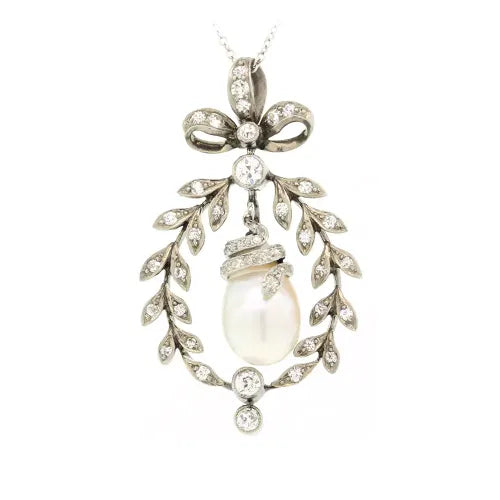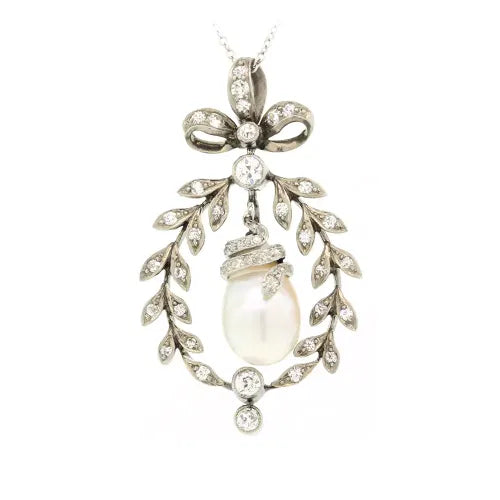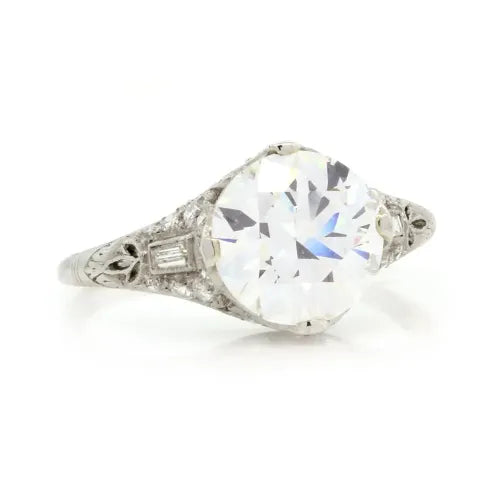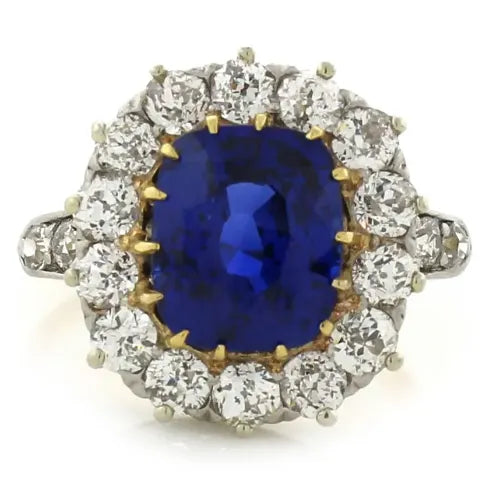
In a world full of ever changing trends, it can be difficult to find the perfect piece of jewelry to match your closet and your piggy bank. Fortunately, estate jewelry offers a rare solution. From daring architecturally-inspired Art Deco brooches to the romantic feminine Edwardian details, estate jewelry comprises a wide variety of designs and price ranges. Not to mention, an expanded value over purchasing a brand new piece.
For those fascinated with one-off styles and vintage gemstone cuts – and a great deal – buying jewelry second hand can rewarding and lucrative.
What is "estate jewelry"?
The term “estate jewelry” practically means that it has was owned by someone else, not undoubtably that is has come from someone’s estate – although sometimes it does.
Estate jewelry combines high-end design with impeccable construction and fine gemstones at a more approachable price than new pieces. And as an added feature – it’s often an original which is why a great piece is always in demand whether your collecting or purging. Rather than a piece of jewelry you see on everyone else in town, estate jewelry is as special and personalized as its wearer.
What Time Periods Does Estate Jewelry Most Likely From?
Whether the piece belonged to an infamous queen, a celebrity or a family relative, there is a history and a narrative to estate jewelry that brand new items just do not possess. Collectors of antique pieces find that they are both wearable and serve as mementos from years gone by. In fact, most customers look to find pieces from all of the most popular design eras in order to finish off their jewelry collections.
Here’s a quick look at the time periods our customers ask us for most in our store:
Georgian (1714 – 1837)
The Georgian period was inspired by the Hanoverian Monarchs of the United Kingdom. While the reign of English kings dictated the guidelines for Georgian jewelry, design wise the pieces were coveted internationally and inspired creations all over Europe and North America.
Jewelry from the Georgian era is said to be influenced by the time of day it would have been adorned. Garnet, topaz, emerald and ruby were often worn during the day while rose and mine cut diamonds were solely worn at night. Brooches, necklaces and rings from this era are extremely tough to find because they were often handmade without today's tools.
Victorian (1837 – 1900)
The Victorian era, named after Queen Victoria, marked an era of money and the rise of industrialization and the middle class. Women were asserting themselves for jobs as clerks, teachers, factory inspectors and they were determined to win the right to vote. Women’s fashion experienced a profound transformation and crinolines expanded to astronomical proportions.
As a result, women were purchasing jewelry as gifts for themselves, and to meet the demand for pieces, a wide variety of gemstones were used as cost alternatives to more precious stones like diamonds and emeralds. Amethysts, coral, garnets, turquoise, seed pearls, and opals were also popular gemstones across the world at the time.
Victorian designs were influenced by fine art and architecture like those of the Georgian era but with more ornate and detailed features seen most frequently in necklaces, lockets and brooches.

Edwardian (1901-1915)
The Edwardian era earned its name from the dynasty of King Edward VII. Although the 20th century was in full swing, the culture of Victorian times had not completely dissipated, and jewelry was still being crafted to convey femininity and dignity.
This design era is best known for its extensive use of filigree. By lacing together tiny pieces of precious metals to the surface of ring and necklace settings, Edwardian jewelers gave their creations a unique look. Garlands, ribbons, laurel wreaths, bows, knots and tassels were also recreated with in featherlight accessories thanks to the advances in platinum fabrication.

Art Nouveau (1890-1910)
Even though this era coincided with the Edwardian and Victorian eras and was relatively brief, Art Nouveau made an everlasting contribution to the history of jewelry design. At the time, jewelers thought of themselves as artists more than craftsmen and took extra care to craft and perfect breathtaking jewelry.
Diamonds were used rarely in Art Nouveau while moonstone, amethyst, opal, amber, citrine, peridot, and freshwater pearls were abundant in rings and jewelry. Unlike prior eras that were inspired by art and architecture, much of the influence behind this era’s pieces came from Japanese paintings and nature.
When you think of Art Nouveau estate jewelry, envision orchids, irises, lilies, dragonflies, and butterflies as well as depictions of the female form.

Art Deco (1920-1935)
The Art Deco era was an exuberant time period full of flappers and speakeasies. During the Roaring Twenties, the economy flourished just as Prohibition magnified the urge to cast aside old-world Victorian rules.
Estate jewelry became bolder and more masculine in the early 1930’s than in previous times. The lace and filigree from Edwardian jewelry and the natural curves of Art Nouveau were replaced with smooth, straight lines. Art Deco jewelry was designed to be more abstract and iconic due to influences from Cubism and Dadaism. As you could guess, diamonds, white gold and platinum were the most common choices for jewelers.

Retro (1930’s-1940’s)
Even in the middle of economic depression, Retro jewelry is said to be some of the most sophisticated and eye catching ever created. Jewelry from this time was inspired by Hollywood’s golden age as everyday women wanted jewelry that epitomized the glitz and glamour seen on the big screen.
Cocktail rings, bracelets, earrings, and necklaces were designed with larger proportions, lending the pieces a playful yet whimsical feel. Retro jewelry was also defined by curves and feminine motifs such as bows, ribbons, ruffles, and flowers — but always on a larger scale.
A deficit of platinum (due to the war) led goldsmiths to use more gold than in previous eras, which led them to experiment with new alloys mixtures. By combining yellow gold with silver and copper, they formed colored gold with alluring shades of rose and green.

Jewelry crafted after the Retro era is known as contemporary estate. Although not as coveted now, those age defining pieces as with the other time periods will be in high demand later in life.
So, whether you’re looking to change your look, own a piece of history or find the ideal cocktail ring, estate jewelry is the ideal way to personalize your look, stay on budget and showcase stories from the past.
Interested in Seeing Estate Jewelry First Hand?
Take a look at some of our collection online or visit our downtown Columbia store to see it first hand.


